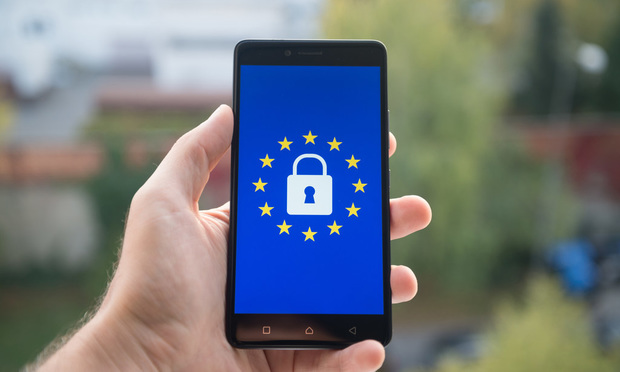Complying with GDPR consent is an art and a science
By only approaching consent management scientifically, insurers are only doing the bare minimum to comply with these regulations.

You’ve seen it before, the long form you must sign before partaking in a potentially dangerous activity; the checkbox at the bottom of an end user agreement before you can use a new piece of software; the abundant documents that are part of every major monetary purchase.
These laborious practices are developed by corporations as reaction to a regulation, an issue or advice from a lawyer.
Not surprisingly, associations are responding analogously to growing regulatory concerns such as ePrivacy, GDPR and CCPA. To address the new regulations rapidly and efficiently, insurers stick to the “science” side of consent collection while disregarding the “art” of consent collection. This is an important difference because customer consent is the crucial element that unlocks valuable customer conversation and insights that drive a more expressive exchange.
The ‘science’ of consent collection.
The technology, data and regulations surrounding the collection of data encompasses the “Science of Consent.” These components are well-defined, agreed across a company, heavily supervised and can be eagerly reported both inside and outside the organization.
There is nothing characteristically wrong with viewing consent this way. However, by only approaching preference and consent management scientifically, insurers are only doing the bare minimum to comply with these regulations. Also, just because a business adopts a technology, that doesn’t mean it fully considers customer and business needs or the intended spirit of the laws. A science-only attitude prevents organizations from benefiting from the best aspects of what consent management can essentially offer.
In European countries, corporations are further along with the ideology of allowing patrons to provide consent. These organizations recognize that in order to get a bigger take rate on collecting consent, they must marry preference with consent management to offer an attractive incentive.
If there is no apparent value to the individual providing consent, why would they be eager to do so?
By adding preference options to consent, businesses allow customers to be explicit with the types of communications, the cadence and the medium that they receive such communications. This improved specificity is a solid first step for initiating trust between companies and consumers, ultimately establishing and encouraging a long-term relationship.
To accomplish the maximum return on investment for focusing on mandatory compliance requirements, organizations should accentuate on the ‘art’ of consent and preference management. In doing so, preference and consent management drives original adoption and results in the best long-term benefit.
Firms that approach consent with the ultimate goal of sanctioning customer conversations focus on utilizing implementations that drive more specific preferences across business units, applications, products, communication channels, and desired regularity. This long-term outlook leads to nourishing and profitable customer relationships. Dynamics such as timing, placement, and design drive adoption by both the company and by its customers.
How to implement consent ‘artfully’
Here are some traits of a comprehensive consent process:
- Consent spot collection: Rather than requesting consent through a singular checkbox or a long wide-ranging form, consent is spread attentively through the customer journey. Consent and preferences are collected from the customer at points that are meaningful such as registration, looking for new products, etc. Taking account of these instances increases the prospect the customer will not only understand what they are agreeing to but also increase their willingness to provide consent.
- Capability to opt down: Once consent is collected, institutions that think of consent in broader terms provide well designed and personalized forms that allow customers to reduce the communications they are currently receiving. These forms should be easily manageable from any customer touch point. A refined opt-down method is a step toward turning a would be total opt-out into a more useful and individual opt-in.
- Hands-on suggestion: According to customer behavior, lack of commitment with outbound communications or customer driven actions, companies may offer options to current modes, frequency and types of communications. This prediction of a potential change in consent increases the possibility of maintaining some level of consent for continued communications.
Privacy technology must be contemplated with industry-specific and problem-specific best practices. For example, a financial services company needs the capability to collect consent across multiple channels such as in-person interaction while an e-commerce-only company does not. A general approach will fail and negatively impact a company’s consent collection proposals.
The most accurate way to combine the science with the art of consent and preference management is to review and assess implementations based on real world use cases. Spending time on competitive websites, follow the “unsubscribe” link in emails and studying customer engagement are some of the best practices. Merging this research with accepting why your customers provide consent in the first place and how they benefit from doing so over their relationship with your company is the foundation for a beneficial approach.
Regardless of your organizations approach to addressing consent, download The Forrester New WaveTM: GDPR And Privacy Management Software, Q4 2018 report. This report provides insight into vendors that are equipped to solve your organization’s unique consent challenges across the spectrum of science to art.
Eric V. Holtzclaw is chief strategist of PossibleNOW, which leverages powerful technology and industry-leading expertise to enable companies to listen to customers, remember what they like and dislike and respond in useful, personalized ways. Holzclaw also is the author of “Laddering: Unlocking the Potential of Consumer Behavior.”
These opinions are the author’s own.
See also:

